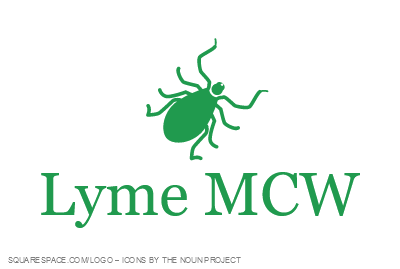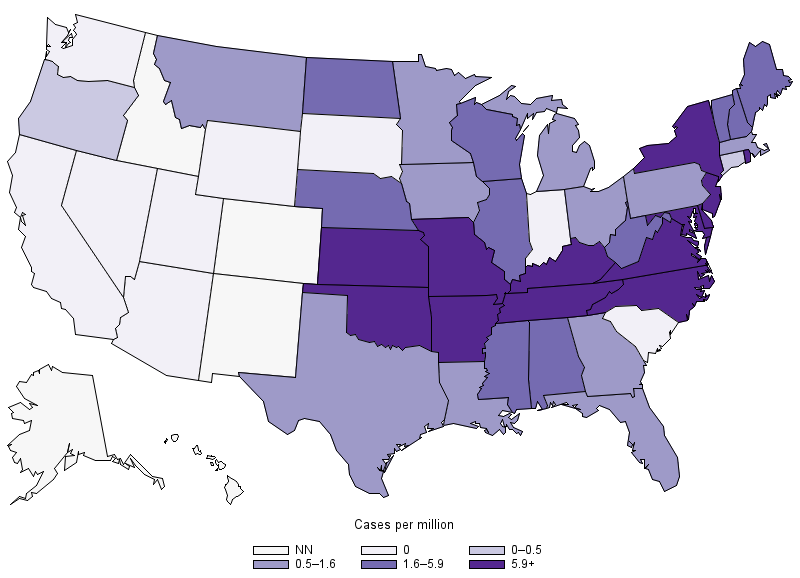Life Cycle & Transmission
Wright stain of peripheral blood smear showing Ehrlichia chaffeensis
Ehrlichiosis is caused by several species of Ehrlichia bacteria, including Ehrlichia chaffeensis, E. ewingii, or E. muris eauclairensis. However, the majority of reported cases are due to infection with E. chaffeensis. In Wisconsin, ehrlichiosis is transmitted to humans through the bite of an infected deer tick (Ixodes scapularis). In other parts of the U.S., ehrlichiosis can be transmitted by the lone star tick (Ambylomma americanum). For more information on disease transmission and the life cycle of these ticks, please see the “Tick Ecology” section.
Who Gets Ehrlichiosis & Where?
Ehrlichiosis, previously referred to as human monocytic ehrlichiosis (HME), was first recognized as a human disease in the U.S. in the late 1980s, but it did not become a reportable disease until 1999, with the first data reported in 2000. The majority of reported cases occur in late summer/early spring, when nymphs are most active. In the United States, ehrlichiosis is found primarily on the east coast, in both northern and southern regions, including the Upper Midwest. Ehrlichiosis is more frequently reported in men than women, and is more prevalent among people between 60-69 years of age. Additionally, E. chaffeensis and E. ewingii infections occur primarily in south-central, southeastern, and mid-Atlantic states, whereas E. muris eauclairensis infections have only been reported from Wisconsin and Minnesota (CDC 2018).
Symptoms
Signs and symptoms of ehrlichiosis usually begin within 1-2 weeks after the bite of an infected tick. Early signs and symptoms (within the first 5 days of illness) include:
Severe headache
Fever and chills
Muscle aches
Nausea, vomiting, diarrhea, loss of appetite
Confusion
Rash (more common in children)
Late stage symptoms can result from delayed treatment and include:
Damage to the brain or nervous system (e.g. meningoencephalitis, or inflammation of the brain and surrounding tissue)
Respiratory failure
Uncontrolled bleeding
Organ failure
Death
Diagnosis
Blood tests are normally used to determine the presence of antibodies to Ehrlichia bacteria.
Treatment
Antibiotics can be used to treat ehrlichiosis. Doxycycline is the recommended treatment.
For information on prevention, please see the “Tick Ecology” section.
Sources
CDC 2018 (“Ehrlichiosis”): https://www.cdc.gov/ehrlichiosis/index.html
For additional reading, please visit the “Resources” tab.




